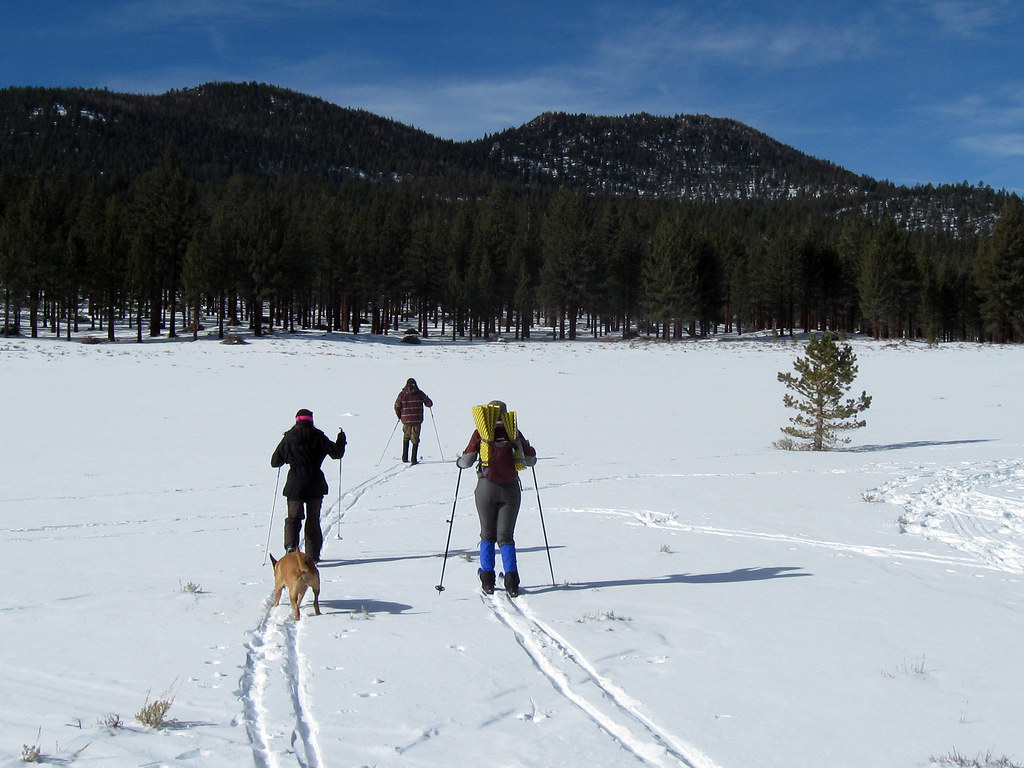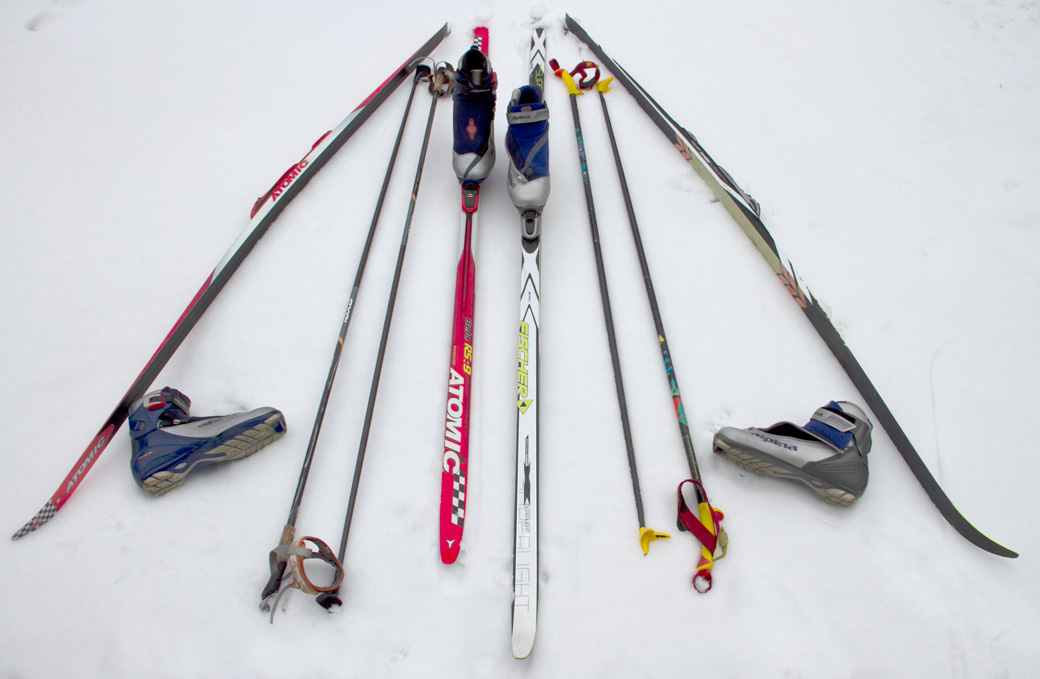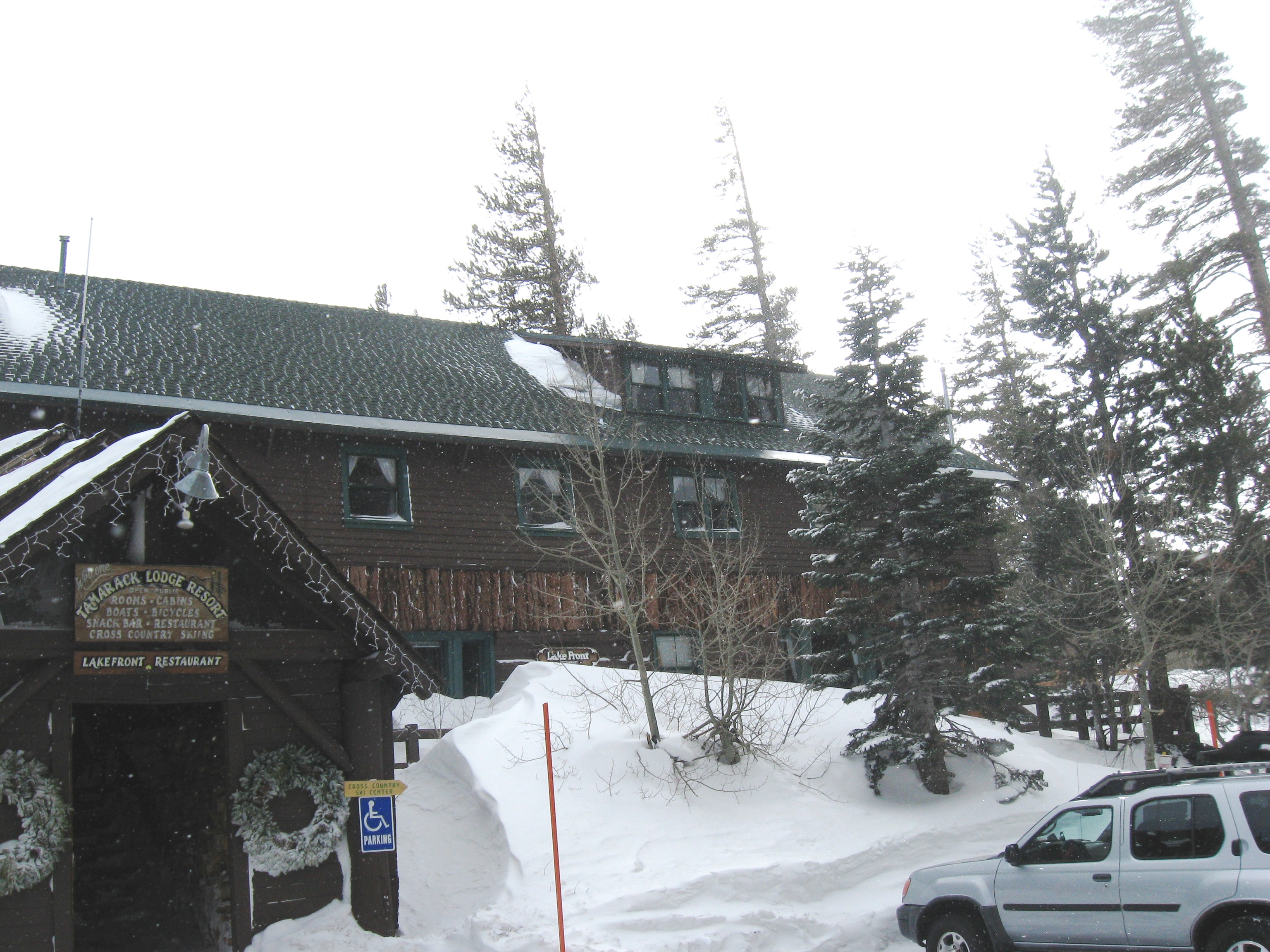If you’re an avid downhill skier and are looking for something new to try, cross-country skiing here in Mammoth Lakes might be a good fit. But just how different are these two activities? Can you use some of the same gear for both? And what can you expect from a day of flat-land skiing when you’re used to the slopes?
In this article, we’re going to introduce you to the exciting world of cross-country skiing, including how to get started and where in Mammoth you can find the best trails.
What are the big differences between downhill and cross-country skiing?
They may both be called skiing, but once you start learning about the differences, it becomes clear that these are two very different sports.
Here are some of the things that set them apart:
-
Terrain. The name says it all. Downhill skiing is for skiing down the slope of a mountain. Cross-country skiing takes you over a variety of terrain. In fact, x-country skis can go up and down gentle slopes as well as over flat surfaces.
-
Speed. Downhill skiing uses the power of gravity to create a thrilling, high-speed experience. Cross-country skiing is much slower, as it relies on momentum created by the skier.
-
Equipment. The biggest difference in gear is that downhill skis lock the entire boot in place whereas cross-country skis are only attached at the toe. This allows the XC skier to lift their heel as they move. We’ll talk more in a moment about the specific equipment needed for each sport.
-
Learning curve. It’s no surprise that you can’t barrel down the side of a mountain without some practice. And downhill skiing takes quite a lot of it. You can shorten the process by taking lessons, but the fact is, there is a learning curve to this version of the sport. Cross-country skiing, on the other hand, doesn’t require much technical skill. You’ll need to be physically fit, of course, but you don’t have to spend nearly as much time getting the hang of it as you do with downhill skiing.
-
History. Cross-country skiing originated in Scandinavian communities some several thousand years ago as a means of travel. Downhill skiing, on the other hand, is a much more recent invention. Some of the first documented examples of this kind of skiing date back to the 18th century in Norway as part of military exercises. Later it was popularized in the Alps.
Note: Don’t get confused between nordic and alpine skiing! Even though downhill skiing was invented in Norway, it’s called alpine skiing. Nordic skiing, or cross-country skiing, derives its name from the Nordic countries of Norway, Sweden and Finland where it existed for thousands of years.

What kind of gear is needed for each sport?
If you already have a pair of downhill skis, unfortunately, you can’t simply swap them for a flat landscape. Each sport requires their own set of gear, including:
-
Specialized skis. The skis used for cross-country skiing tend to be longer and more narrow than downhill skis. They are also constructed with a specific angle, called a camber, that allows for a smoother gliding motion.
-
Boots. Downhill ski boots are made of rigid, protective polyurethane or polypropylene plastics. Some of the higher-end brands also incorporate materials like carbon fiber. They are bulky and tall, which is important in protecting the ankle from impact and injury. Cross country ski boots look almost like an athletic or hiking shoe. While still supportive, they incorporate more flexible components for the skier to move comfortably.

-
Outerwear. Because you’re moving faster and are typically higher up on the mountain when downhill skiing, you’ll benefit from more heavy-duty outerwear. In contrast, XC skiers are usually comfortable with a few fleece layers to stay warm.
-
Helmet. Downhill skiing without a helmet is a huge risk, especially as you start navigating more difficult slopes. Cross-country skiing doesn’t come with the same risk of injury, so you can ski comfortably without a helmet.
Which sport offers a better workout?
It’s difficult to compare downhill and cross-country skiing in terms of physicality. The truth is, both can be a great workout in their own ways.
Downhill skiing, for instance, requires you to activate a variety of muscles, especially in your legs and core, to keep you balanced and in control at high speeds. It’s also an aerobic activity, with short bursts of intense cardio. In fact, downhill skiing is often equated with HIIT workouts or other kinds of interval training. Additionally, downhill skiing is considered by most to be a high-impact sport, which, when done safely, can promote bone health.
Cross-country skiing may be a slower activity, but don’t get the wrong idea! You’re in for a physically challenging, full-body workout. From your shoulders, to your core, to your leg abductors and calves, you’ll need to use a variety of muscles to maintain forward motion. In terms of cardio, XC skiing is definitely an endurance workout. You’ll get your aerobic and anaerobic cardio, especially if you challenge yourself to ski on ungroomed trails with a few uphills. And, while it’s not as low-impact as something like swimming, this style of skiing is great for anyone who wants to lessen the load on their joints.
Finally, it should be noted that downhill skiing is often done at higher elevations than cross country skiing. Training at high altitude where oxygen is less accessible is a great way to boost endurance. Of course, high altitude is considered anything above 6,000ft. So you can still get these benefits when cross-country skiing in Mammoth Lakes.
Where are the best places in Mammoth to try cross country skiing?
If you’re interested in downhill skiing, you know that Mammoth Mountain and June Mountain are your playground. And, you can even try backcountry skiing with a guide if you want to explore untouched areas.
But, where should you go for cross-country skiing? Tamarack Cross Country Ski Center is a great place to start. Not only do they have gear available to rent, but they can also direct you to some of the over 300 miles of cross country trails available in our area.

Other trails include the Minaret Vista Trail and groomed trails around Shady Rest. Take a look at our blog post on where to cross country ski in Mammoth Lakes and Mammoth Lakes Trail System for more details.
How can you train for skiing right now?
Maybe you’re planning for an upcoming trip to Mammoth and are wondering how to prepare for your epic ski vacation. Here are a few ways that you can be sure to be ready for an amazing experience:
-
Start working on your endurance now. Your biggest challenge when hitting the slopes or the trails is going to be endurance. Even if you are an active person, you’ll be skiing at high altitude. So-called hypoxic sports (or oxygen-limited sports) like swimming can help your body acclimate faster.
-
Try out similar activities. Sports that test your balance and stamina, such as rollerblading, are great ways to prepare for both downhill and cross country skiing. You can also hit up your local ice rink to work on your gliding technique for XC skiing.
-
Focus on flexibility. You may not realize it until you’ve spent a day skiing but flexibility is super important in performance and injury-prevention. Working on your flexibility now can ensure that your joints are able to withstand the new movement patterns you’ll be introducing while skiing.
Which kind of skiing will you choose?
Are you ready to jump on the ski lifts? Or, will you try cross country skiing during your next trip to Mammoth? If you need any assistance booking a Mammoth ski in ski out rental, we’re happy to help. We’ve had such a successful winter so far that you’ll have a few extra months to try both! Book your Mammoth vacation rental now for your upcoming ski trip!
